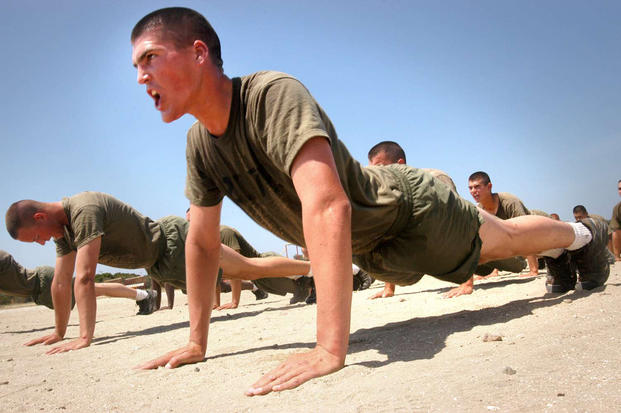If you do not want a trainer to help you with your workout routine and you make up your own workouts, this information is for you. Too many people start random workout programs that they find online, from a magazine or from friends without thoroughly knowing whether they are ready for such a program.
Many injuries happen to individuals who are motivated to make the change but attempt way too much, too soon, doing things too fast without any progression at all.
My first rule for people who want to self-program their training is that they need to perform a quick self-assessment. For instance, if it has been a while since you have trained or attempted new activities like lifting weights, check yourself with a few of the following events to see where you are and how you recover.
Ask yourself: What is my goal? Is the goal a new one, or is it just that you want to perform better on your military fitness test, run a five-kilometer race, enter a powerlifting competition or lose 20 pounds?
Whatever the goal is, here is a list of activities to help you avoid the early injuries that stop many in their tracks just as they are getting started.
Take a Fitness Test
No matter what tactical fitness test you must master, take it first. See whether you can complete the events in the time allowed or complete the timed run without walking. Understanding what your strengths and weaknesses are can help you develop a plan for yourself that focuses on improving your weaknesses and maintaining the strengths you already have, either naturally or from previous training cycles.
Try a Workout and Assess
Whatever the workout is that you found or created, go through the motions of the exercises for a few days with light weight or lower-repetition calisthenics at about 50% of what is required. This is a good way to just test out the movements and see how your body responds to the lighter version. Then you can find acceptable substitutes if needed.
Cut the Reps, Weight and Distance in Half at First
Rather than coming out of the gates 100% motivated to train hard, pull back the reins on yourself for the first few workouts. You'll thank me later. If you decide to join a group and have never done a Memorial Day Murph, ask yourself some questions. Have you ever done 100 pull-ups, 200 push-ups or 300 squats in a workout?
Most people have not, nor have they done anything to prepare for that volume. Pain and potential injury are just waiting to happen. Instead, cut the reps in half and consider assisted versions using pull-up bands or a TRX to make those exercises easier. The bands and TRX rows and squats can take the body weight off the arms and legs and allow for more repetition volume, versus hitting failure set after set.
Advanced Athlete Beware: New Exercises Hurt, Too
Even if you are a seasoned gym rat, any new exercise or activity event will challenge you. Sure, you may have the strength and ability to perform a new exercise a few times, but higher volumes or distances can put you in the hurt locker just the same as they can a newbie in the gym.
Adjustments to military fitness tests across the Defense Department have caused many PFT masters to become CFT weaklings and even fail events for the first time in their career. It will take time for your body to adjust and requires a steady and logical progression into the specific activities tested to build the needed strength, muscle stamina, agility and endurance needed to ace new tactical fitness test changes.
You may need a strength training cycle to build the needed strength and power to handle new exercises. Or you may need a calisthenics and cardio cycle to build up the needed cardio for the high-repetition events of the new test.
Technique Is Everything
If you are new to an exercise, ask someone in the gym to observe your form or use a smartphone to make a video of yourself performing the exercise. Watch people perform the activity well and compare yourself. Then compare it to experts online who are doing it flawlessly.
Many people send me videos of their swimming technique, and I post them on social media (TikTok/Instagram) with a voiceover critique. Many people have similar issues when starting a new activity like swimming and can learn from my videos.
Once you understand the technique and you have assessed your performance, you will know your strengths and weaknesses. Now focus on the weaknesses you discovered by combining both the technique skill days and training days that make sense for your current abilities. Keep track of your workouts, how you recover (eat, sleep, rest) and how you perform each week. Assess yourself again every few weeks to check for progress.
Stew Smith is a former Navy SEAL and fitness author certified as a Strength and Conditioning Specialist (CSCS) with the National Strength and Conditioning Association. Visit his Fitness eBook store if you're looking to start a workout program to create a healthy lifestyle. Send your fitness questions to stew@stewsmith.com.
Want to Learn More About Military Life?
Whether you're thinking of joining the military, looking for fitness and basic training tips, or keeping up with military life and benefits, Military.com has you covered. Subscribe to Military.com to have military news, updates and resources delivered directly to your inbox.


















